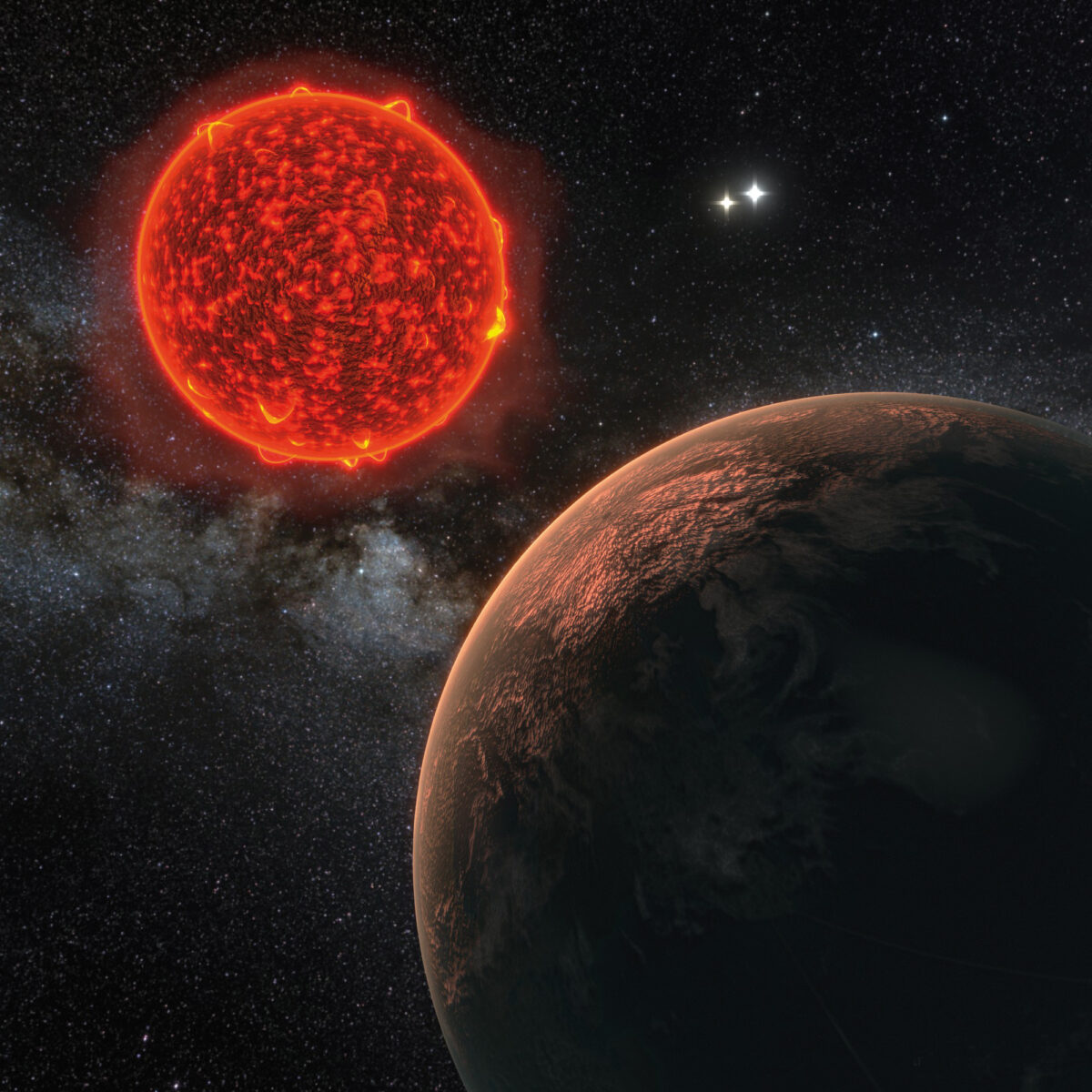In 2016, astronomers announced the discovery of a rocky, habitable, Earth-sized planet orbiting Proxima Centauri, the closest star beyond our solar system. A recent analysis now suggests that Proxima might also host a larger, colder planet.
“We call it Proxima c,” Mario Damasso, an astrophysicist at the Astrophysical Observatory in Torino, Italy, said about the potential discovery at a forum in April. “But it’s only a candidate. That’s very important to underline.”
If confirmed, this planet would make Proxima Centauri the nearest multiplanet system and challenge our understanding of how rocky planets larger than Earth form. Damasso discussed Proxima c on 19 August at the Extreme Solar Systems IV conference in Reykjavik, Iceland. This discovery is currently under peer review in Science Advances.
Bigger, Colder, Farther
Astronomers found the 2016 planet, Proxima b, using radial velocity (RV) measurements of the host star, which showed a characteristic wobble from the planet’s gravitational influence. Damasso and his team sought to validate Proxima b’s existence by analyzing the same data using a different method. They took particular care when accounting for Proxima’s stellar flares and spots.

“Stellar activity can hamper the radial velocity [analysis] because there can easily be present some signal from the stellar activity in the data,” Damasso said.
After accounting for Proxima’s stellar activity and Proxima b’s radial velocity signal, the team noticed a periodic signal leftover in the data. That signal suggested a second planet was tugging on Proxima. To make that signal, a planet would need to be at least 6 times Earth’s mass and orbit at about the same distance as Mars is from the Sun.
“Is this planet habitable? Well, not really. It’s quite cold.”
“This detection is quite challenging, particularly because it’s made with only one technique,” Damasso said. “And the orbital period is very long, so it takes a long time to collect more data.”
“Is this planet habitable? Well, not really. It’s quite cold,” said team member Fabio Del Sordo, an astrophysicist at the University of Crete in Greece. “We estimated a surface equilibrium temperature of only 40 K,” which is −233°C. “So, clearly not habitable.”
A Long Road to Confirmation
At the April forum, University of Hawai‘i astronomer Lauren Weiss voiced concerns that a second Proxima planet might not be where or what the team thinks it is.
“In any system, you don’t know what planets there are [that] you haven’t found yet until you find them,” Weiss said. “They are an unknown unknown, which makes it very challenging to accurately model and fit radial velocities.”
She explained that the signal attributed to Proxima c could very well be a combination of other, weaker signals. “That maybe means that there are additional planets but not at the period at which [they’re] announcing the candidate,” she said.
“It’s possible that this planet migrated from somewhere else in the system.”
Weiss recently told Eos, “I have seen no additional data supporting or falsifying the proposed orbit and minimum mass of the planet candidate Proxima Cen c” since the initial announcement in April.
With its currently calculated orbit, Proxima c would challenge our understanding about how planets that size form, Del Sordo said.
“Since low-mass stars are expected to host multiplanet low-mass systems, Proxima could certainly host other terrestrial planets we could not detect,” Damasso told Eos about his presentation in Iceland. “Analyzing the available RV data with methods different from that we used could reveal additional signal worthy of attention.”
“Models tell us that super-Earths tend to form around the snow line, but Proxima c at the moment is quite distant from the snow line,” he said. “It’s possible that this planet migrated from somewhere else in the system.”
“We plan to go on with radial velocity follow-up” as well as direct imaging with ground-based instruments, Damasso told Eos. “This is a necessary step to do since the orbital period of the candidate is [about] 5 years long.”
And with future astrometry data from the European Space Agency’s Gaia mission, “we should be able to measure the mass with 5% accuracy, which is great news for us,” Del Sordo said. “This will take place in a couple of years with the end-of-mission data.”
When it comes to confirming Proxima c’s existence, “it’s going to be a long road,” Weiss said.
—Kimberly M. S. Cartier (@AstroKimCartier), Staff Writer
Citation:
Cartier, K. M. S. (2019), Nearest star system may have a second planet, Eos, 100, https://doi.org/10.1029/2019EO131263. Published on 19 August 2019.
Text © 2019. AGU. CC BY-NC-ND 3.0
Except where otherwise noted, images are subject to copyright. Any reuse without express permission from the copyright owner is prohibited.

